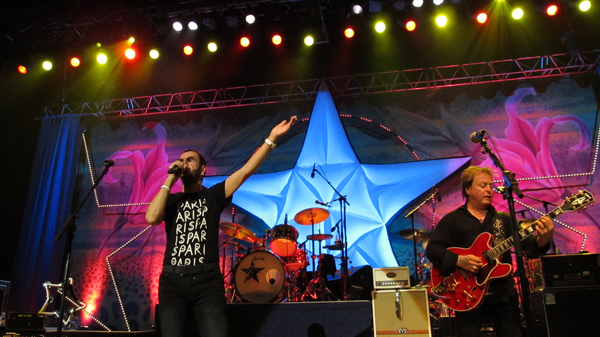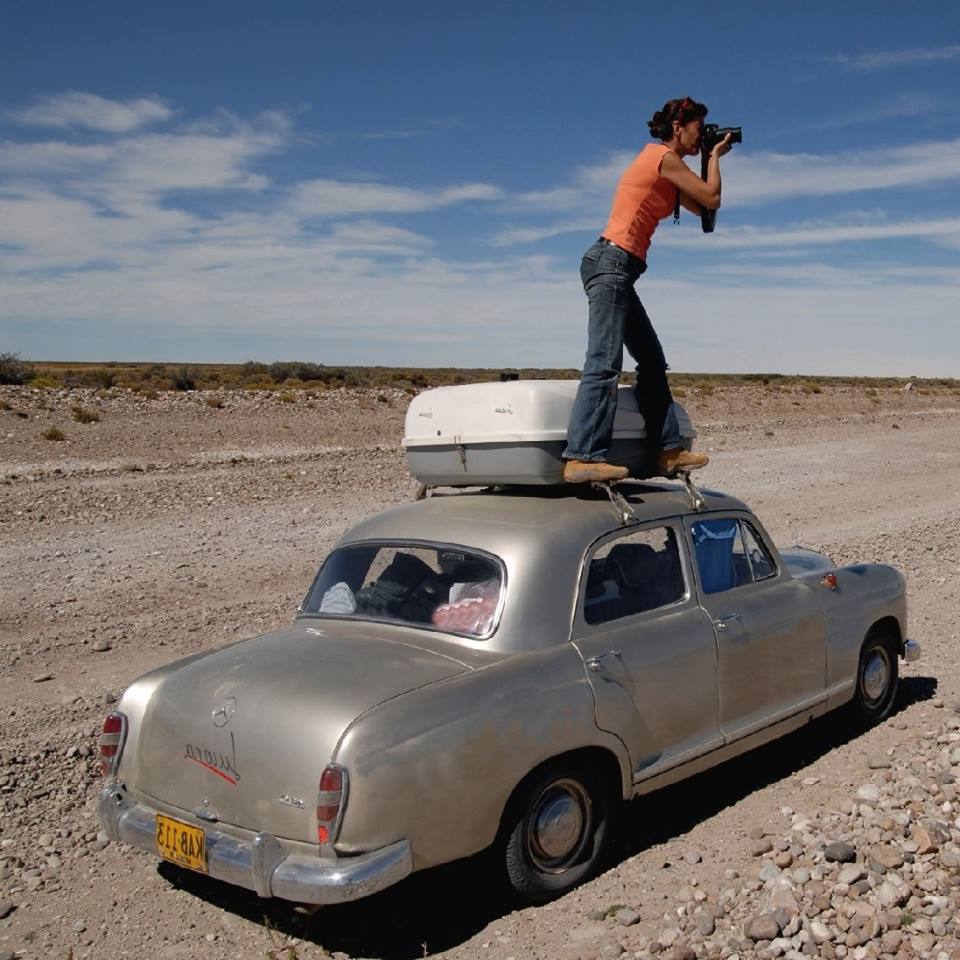 Take a Gabo tour of all the sights connected to Colombia’s complex hero with Emma Newbery
Take a Gabo tour of all the sights connected to Colombia’s complex hero with Emma Newbery
Colombia may claim Gabriel García Márquez as its greatest cultural export, but as the tourism industry cottons on to the idea that the writer may be something they can sell, Gabo makes a complex poster boy for the country.
Firstly, he spent much of his life elsewhere, limiting the number of stops one can realistically make on a Gabo-tour.
Moreover, the writer never shied away from presenting the uncomfortable truth about Colombia’s violence and corruption. His writing as a journalist sent him into semi exile in the 1950’s, and in 1981 the government accused him of financing the guerrilla group M19, which led him to successfully seek political asylum in Mexico. President Belisario Betancur personally welcomed him back for a visit in 1982 after he was awarded the Nobel Prize, and when he died in 2014, President Santos led the tributes, calling him “the greatest Colombian who ever lived.” But the author had long adopted Mexico City as his hometown.
Perhaps it doesn’t matter where he lived; in the end, his writing is unequivocally Colombian. His words might as well have been marinated in aguardiente and baked in the coastal sun, and there are still plenty of sights across the country to fascinate his fans.
Aracataca
This tiny town only one-and-a-half hours by bus from Santa Marta was the inspiration for Macondo. Gabo was born and spent his formative years here with his grandparents, who breathed life into the fictional town.
Energetic Dutchman Aan’t Goor was so captivated that he took the name Tim Buendía and set up a hostel and tour company there. “I wanted to recreate Macondo”, he explained.
He said that Aracataca is a great place to visit, and is a unique location with a very similar history to Macondo, but warned that much of it is hidden.
As part of his efforts to galvanise tourism and inspire local people, Buendía wore a dress around town and built Melquiades’ tombstone. “I wanted to show myself as a character in Macondo. If I was able to be a character, people in the town would think, ‘hey – we’re in a novel ourselves’.”
Sadly, although he succeeded in growing tourism in the town to some degree, it wasn’t enough to support his family and he has now closed his Gypsy Hostel and moved away. He is seeking crowd funding for a book about his experiences – half in Aracataca and half in the rest of the world.
 Gabo sights:
Gabo sights:
Gabriel García Márquez Museum (Casa Museo Gabriel García Márquez)
With architecture typical of the time, this reconstruction of the García Márquez home opened in 2010. The original house was demolished over 40 years ago and was re-built with input from Gabo, his writing, and his family. It risks becoming doll’s-house-esque at times, with statues and quotes on the walls, but various original details make it evocative of the Buendía residence, from the kitchen to the visitors room, the bedrooms to the silver workshop, replete with golden fish. Buendía says that the local authorities are currently investing in a new museum.
Telegraph office (Casa del telegrafista)
The telegraph office where Gabo’s father, Gabriel Elijio García, worked is now a little tattered and run down, but more authentic than the recreated casa.
Train station
In 2007 this station was packed with thousands of well-wishers, eager to greet García Márquez as he arrived by train on a visit to mark the fortieth anniversary of One Hundred Years of Solitude.
The train is an important feature in the book, and is certainly worth a stop on your Aracataca tour. This sleepy station now sees only passing freight trains. When Gabo visited, there were plans to create a Macondo tourist train from Santa Marta, passing by his school and the banana plantations, but sadly, that train only made one trip.

A view of Santa Barbara church from the banks of the Magdalena River.
Mompox
Mompox is one of the stops in The General in His Labyrinth – a fictional chronicle of Bolívar’s final journey.
“In the aluminium light of the noon [the General] saw the first roofs of the very ancient and long-suffering city of Mompox that had been devastated by war, debased by the turmoil of the Republic, decimated by smallpox.”
Richard McColl, a journalist who runs local hotel La Casa Amarilla, tells us: “Mompox is the last authentic colonial town in Colombia which still retains its ambiance.” He adds, “Mompox still belongs to the Momposinos unlike other places which have become a haven for second homeowners.”
The town exudes magic, history and wonderment, stories abounding in every corner, every stone, every street. It may be geographically isolated, but the journey is more than worth it.
When the Magdalena River split, Mompox was left stranded, an island in the middle of a vast river, giving rise to an incredible time-warp town. Many Colombian towns are often said to be lost in time, but nowhere is this truer than Mompox.
Richard says, “Gabo’s wife Mercedes was from nearby Magangue and went to school in Mompox. Given that the couple met while young, one can presume that they courted in Mompox.”
Getting there has never been easier. In high season Satena is putting on direct flights from Bogota. Otherwise, get a flight to Corozal and take a three-hour bus ride, or make the six-hour journey from Cartagena or Valledupar.
Barranquilla
While working for local paper El Heraldo in the early 50’s, Gabo became one of the founding members of the ‘Barranquilla Group’ of intellectuals and immersed himself in authors like Hemingway, Joyce, Woolf and Faulkner. Without Barranquilla, Gabo once said in an interview, he could not have won a Nobel prize.

La Cueva. Photo: Olly West
Gabo sights:
La Cueva
Thankfully saved from demolition in 2001, by those determined to preserve the legacy of the Barranquilla Group, the hangout that Gabo and his friends founded in 1954 as a place for intellectuals to drink in the 50’s and 60’s has been charmingly refurbished. It is now a bar, restaurant, gallery, and home to a cultural centre, Fundación La Cueva – having spent over three decades as a private social club in the interim. Bar staff are more than happy to go into detail about the group’s adventures at La Cueva or recount stories that have passed into local legend, and you may be lucky enough to bump into Heriberto Fiorello, the journalist who helped create the foundation and still acts as director. A spectacular added bonus: looking over the patrons is a mural painted by Gabo’s contemporary Alejandro Obregón – painstakingly revealed during the refurbishment. It had been covered by whitewash for 30 years and is complete with the gunshots that the artist fired at his own work on the wall.
Caribbean Museum
Immerse yourselve in Caribbean culture and check out the room dedicated to his life, with a recreation of his office from his time at El Heraldo.
Bogota
It is fair to say that when he arrived, Gabo was not Bogota’s biggest fan, finding the city cold and wet compared to the heat of the coast. Perhaps it’s appropriate therefore, according to Hector Abad Faciolince, that the one “happy” consequence of 1948’s violent Bogotazo, was that Gabo abandoned the capital, leaving his law studies behind as a result and dedicating himself to writing.
Gabo sights:
Jesuit Liceo Nacional, Zipaquira
Twelve-year-old Gabo was sent away to school after the death of his grandfather. He sought solace in books, often reading aloud to his classmates.
Universidad Nacional
Enrolled as a law student at his father’s behest, the author was a reluctant student. However, during this time he discovered the Bogota that many of us know and love – one of cafes, bars and endless cigarettes – and really began to pursue his love of fiction. El Espectador published various of his short stories.
Lievano Palace
A life-sized bronze statue of the young writer by Julia Merizalde sits in the gardens of the Lievano Palace, on the west side of Plaza de Bolívar.
Cartagena
He arrived here in 1948, fleeing the Bogotazo with just a few pesos, initially sleeping on a bench in Parque Bolívar. He returned in the 90’s and built a house in the city.
The very winds of Cartagena seem to carry the words of the scribe in the chocolate box historical centre that reverberates with traces of Gabo.
The city features in various of his works, most famously Love in the Time of Cholera but also Of Love and other Demons, and The General in His Labyrinth.
Gabo sights:
Check online for the specific Gabo tours that are available in the city – or download or buy the audio tour from Tierra Magna on the Plaza Santo Domingo.
The tours have over 30 points of interest, from the obvious, such as his house and the park bench, to others like:
Shipwrecked sailor
On the seafront between the centre and Bocagrande is a concrete book – a monument to Relato de un Naufrago (Story of a Shipwrecked Sailor).
Plaza de Madrid
Where love-struck Florentino Ariza obsessively watched the outside of Fermina Daza’s house.
Sofitel Santa Clara – Santa Clara convent
As a journalist, Márquez was sent here to cover a story on the remains of a girl with 22 metres of copper hair – later to feature in Of Love and Other Demons. The crypt is still accessible from the hotel.
By Emma Newbery





